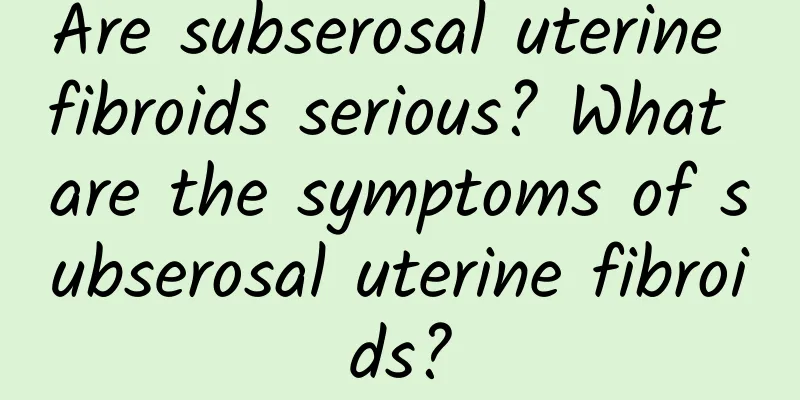Are subserosal uterine fibroids serious? What are the symptoms of subserosal uterine fibroids?

|
Uterine fibroids are very common gynecological diseases. In addition to intramural fibroids, which are the most common, there are also many submucosal fibroids, accounting for about 20% of fibroids. According to experts, common uterine fibroids are divided into intermural fibroids, submucosal fibroids, and subserosal fibroids according to their growth locations. So, are subserosal uterine fibroids serious? When the fibroids between the uterine muscle wall grow to the vegetable membrane layer on the surface of the uterus, so that the surface of the fibroids is only covered with a little muscle wall and serosa, it is called subserosal fibroids. It accounts for about 20%-30% of the total number of uterine fibroids. Due to the protrusion of the fibroids, the uterine cavity is enlarged, the appearance is irregular, the surface is uneven, and the nodularity. When the fibroids continue to grow under the serosa, forming a pedicled subserous fibroid connected to the uterine wall. Due to the obstruction of blood supply, the tumor necroses, and the patient will experience abdominal pain and fever. If the fibroid pedicle breaks, the fibroid falls off in the pelvic and abdominal cavities, and adheres to adjacent organs such as the greater omentum and mesentery to obtain blood supply, it is called a parasitic fibroid or a wandering fibroid. When the fibroids grow on the walls of both sides of the uterus and grow in the broad ligaments on both sides of the uterus, they are called broad ligament fibroids. This type of fibroid often compresses the nearby ureters, bladder, and iliac blood vessels, causing corresponding compression symptoms. Common symptoms of subserosal fibroids: increased menstruation, lower abdominal mass, increased vaginal discharge, etc. Symptoms of subserosal uterine fibroids are common in larger intramural fibroids. Due to the increase in the uterine cavity, increased glandular secretions and increased leucorrhea, submucosal fibroids are accompanied by infected leucorrhea, and sometimes the symptoms of subserosal uterine fibroids can be bloody. Pain: Symptoms of subserosal uterine fibroids are abdominal pain, backache, and dysmenorrhea. Symptoms of subserosal uterine fibroids are also manifested as lower abdominal swelling or back pain, which is not too serious. |
<<: Is uterine fibroids serious? What are the treatments for uterine fibroids?
>>: Is intramural uterine fibroids serious? What should I do if I have intramural uterine fibroids?
Recommend
What are the common symptoms of adnexitis?
Adnexitis is a common female disease, but it is o...
Overview of Dysfunctional Uterine Bleeding
Dysfunctional uterine bleeding is a disease name ...
Are the symptoms of uterine fibroids obvious? Can uterine fibroids cause lower limb edema?
Uterine fibroids are one of the most common benig...
Constipation is not a good thing! 3 foods + fats are effective
The stool is not cleared and the lower abdomen is...
What are multiple uterine fibroids? What is the high-risk age for multiple uterine fibroids?
According to statistics, about 20% of women over ...
Do some muscle exercises before running! Better fat burning effect
Running is one of the most effective exercises fo...
A new generation of weight loss drugs developed in the UK is expected to be launched in 5 years
As material conditions become increasingly afflue...
Create a "thin waist" goddess chair exercise to reduce belly fat
It’s actually very simple to create a slim and sl...
5-color crystal rice dumplings add phytochemicals, kidney patients eat less burden
On the eve of the Dragon Boat Festival, every hou...
Which is more harmful, artificial abortion or medical abortion? Women should pay attention to these after artificial abortion
Which is more harmful, artificial abortion or med...
What causes ovarian cysts women need to know
As life and work become increasingly busy, many f...
What are the reasons for frequent abdominal pain after abortion?
Many patients experience abdominal pain after abo...
How long does it take for a threatened miscarriage to actually occur?
After a threatened miscarriage occurs, it is usua...
Can cervical erosion cause infertility?
Can cervical erosion cause infertility? 1. Clinic...
How to quickly resolve dysmenorrhea?
How to quickly solve dysmenorrhea? Many female fr...









